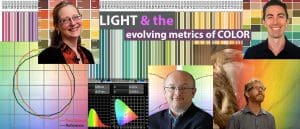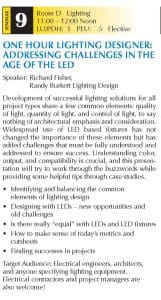It is common to find RBLD staff presenting on key topics in lighting for both industry groups as well as members of the public. The month of March is no different, with members of our staff presenting in both St. Louis as well as San Francisco.
 March 8th – Randy will be presenting ‘A Designer’s Perspective on the IES Method for Evaluating Light Source Color Rendition’ for the IES San Francisco chapter as part of their ‘Light and the Evolving Metrics of Color’ series. The program outline is below:
March 8th – Randy will be presenting ‘A Designer’s Perspective on the IES Method for Evaluating Light Source Color Rendition’ for the IES San Francisco chapter as part of their ‘Light and the Evolving Metrics of Color’ series. The program outline is below:
‘A member of the IES TM-30-15 development committee, Randy will show how TM-30 represents the latest attempt to bring the evaluation of light source color rendering into the 21st Century. With a combination of new fidelity and gamut metrics and insightful graphics illustrating their impact, TM-30 offers much to consider. This seminar will explore the practicality of using TM-30 as an informative design tool, and will show how TM-30 can help us make better design decisions. The seminar will also address ethical issues that lighting designers may face when employing spectral tuning, and will how manufacturers are considering products to support spectral shaping – the increasingly precise control of color in light. ‘
Click here to RSVP for Part 1 seminar or the whole series
 March 22nd – Rich will be presenting ‘One Hour Lighting Design – Addressing Challenges in the Age of the LED’ at the Electrical Expo presented by The Electrical Board of Missouri and Illinois. The program is below:
March 22nd – Rich will be presenting ‘One Hour Lighting Design – Addressing Challenges in the Age of the LED’ at the Electrical Expo presented by The Electrical Board of Missouri and Illinois. The program is below:
‘Development of successful lighting solutions for all project types share a few common elements: quality of light, quantity of light, and control of light, to say nothing of architectural emphasis and consideration. Widespread use of LED based fixtures has not changed the importance of these elements but has added challenges that must be fully understood and addressed to ensure success. Understanding color, output, and compatibility is crucial, and this presentation will try to work through the buzzwords while providing some helpful tips through case studies.’